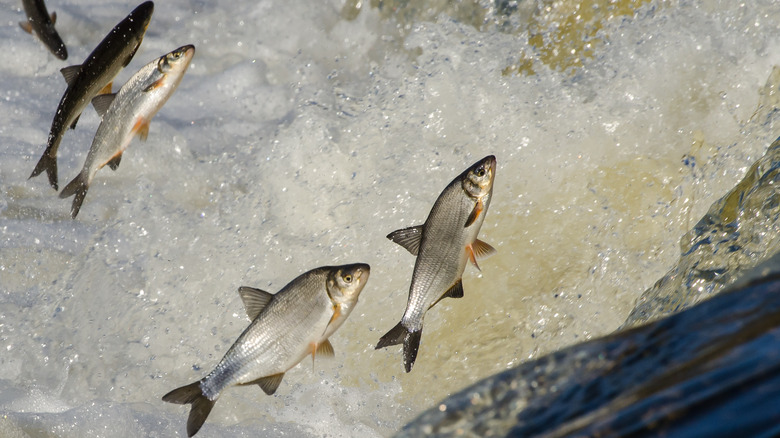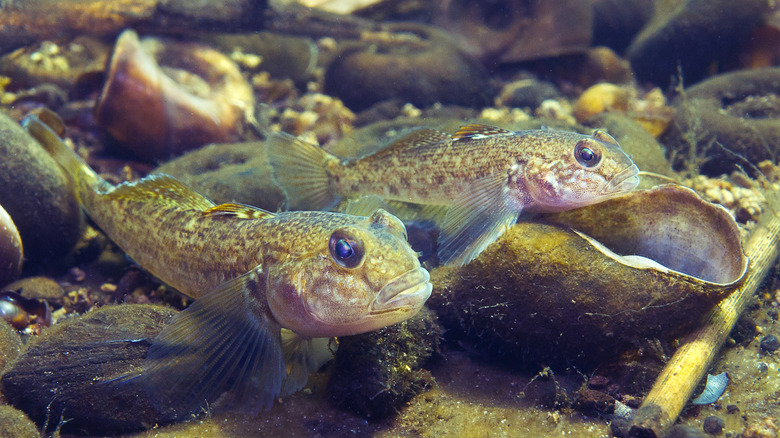The Unexpected Way Some Fish Climb Up Waterfalls
The wide and varied creatures of the animal kingdom all have different habitats, behaviors and roles to play. Their biology, then, is adapted to enable them to thrive in whatever their unique area happens to be. For numerous different bird species, for instance, the skies and high nesting locations are their domain, hence their majestic wings.
Needless to say, not all birds have these. Per World Atlas, there are around 57 species of flightless birds, including some penguins. Many of these particular species are famed for their ungainly waddle on land and deft, agile swimming, another example of their adaptation to their specific habitat.
Fish, too, are aquatic animals and generally fantastic swimmers. They can usually breathe just fine underwater using their gills, but their drippy domain can pose unique problems. How do fish traverse the rushing waters of a waterfall? Going down is one thing, but some species have developed a surprising way of climbing them.
The incredible Nopili rock-climbing goby
Fish, of course, don't really have bodies that are naturally adapted to climbing of any sort. Even so, some unique species battle on and achieve remarkable things despite that limitation. The mudskipper is one such example. The documentary "Wild Africa" stated in 2009 (per the BBC) that a mudskipper is "not so much a fish, but half a fish," capable of evading the many threats in the water by climbing trees and finding high ground. Breathing on land is a very unique trait for a fish, but the multitalented mudskipper makes its own rules.
Without opposable thumbs, claws, or any conventional grasping tools, fish have to find ways to ascend using the familiar body parts they tend to have in common: their fins and powerful mouths. The latter, in particular, is crucial for some fish's efforts to climb waterfalls.
According to National Geographic, the Nopili rock-climbing goby, as its name suggests, has no problem climbing this tricky terrain. The outlet reports that this small yet formidable fish "uses suckers in its mouth and belly to move up steep cliffs in its rugged Hawaiian habitat." This goby is only about an inch in length, but it seems to be quite the powerhouse.
Gobies are some nature's most impressive climbers
In the 2013 paper "Evolutionary Novelty versus Exaptation: Oral Kinematics in Feeding versus Climbing in the Waterfall-Climbing Hawaiian Goby Sicyopterus stimpsoni" (via PLOS One), Joshua A. Cullen, Richard W. Blob et al dive into this curious little fish and its incredible talent. According to the researchers, "these fish use an 'inching' behavior to climb waterfalls, in which an oral sucker is cyclically protruded and attached to the climbing surface."
The study went on to explain that the same species exhibits a similar and unusual way of eating, suggesting that it may have developed such behaviors in order to adapt to the unique challenges of its environment. Blob went on to explain to Live Science just how much the Nopili rock-climbing goby goes through in its attempts, which can result in scale waterfalls around 100 meters (330 feet) tall. According to Blob, such a journey would be the equivalent of a human "doing a marathon, some 26 miles (42 kilometers) long, except climbing up a vertical cliff-face against rushing water."
Every goby species, Smithsonian Magazine reports, has an attachment in the stomach region that enables them to climb like this. This is how these great survivors make new homes for themselves when their often-volatile environments are threatened and a waterfall would prevent them from reaching safer waters. The Nopili rock-climbing goby is simply the best at doing so.


